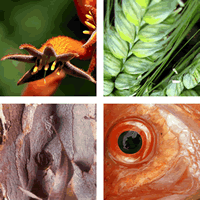About the BAM Act
Q: Which Acts have been replaced by the Biosecurity and Agriculture Management Act?
A: As of 1 May 2013, 16 Acts were replaced by the BAM Act, either in whole or in part. These are:
- Agricultural Produce (Chemical Residues) Act 1983
- Agricultural Products Act 1929
- Agriculture Act 1988
- Agriculture Protection Board Act 1950
- Agriculture and Related Resources Protection Act 1976 (ARRPA)
- Argentine Ant Act 1968
- Artificial Breeding of Stock Act 1965
- Beekeepers Act 1963
- Cattle Industry Compensation Act 1965
- Fertilizers Act 1977
- Plant Diseases Act 1914
- Plant Pests and Diseases (Eradication Funds) Act 1974
- Seeds Act 1981
- Stock (Identification and Movement) Act 1970
- Stock Diseases (Regulations) Act 1968
- Veterinary Chemical Control and Animal Feeding Stuffs Act 1976
The ARRPA will remain in limited operation until the European House Borer controls are ready to be moved to the BAM Act. The Aerial Spraying Control Act and the Veterinary Chemical Control and Animal Feeding Stuffs Act — which no longer applies to animal feeding stuffs — will be repealed once details of the national approach to agricultural and veterinary chemicals is finalised.
Q: Why do we need a new Act?
A: Legislation has existed for many years spread across the 16 different Acts, and there are inconsistencies, confusion and inefficiencies. Legislation and regulations have been reviewed, updated and gathered into the BAM Act. This has involved extensive discussion with relevant producer and community groups, and Government agencies so as to ensure every aspect of biosecurity and agriculture management is regulated consistently.
The main purposes of the BAM Act are:
- To prevent new animal and plant pests (vermin and weeds) and diseases from entering Western Australia.
- To manage the impact and to limit the spread of those already present in the State.
- To safely manage the use of agricultural and veterinary chemicals and ensure agricultural products are not contaminated with chemical residues.
Q: How is the BAM Act different from the Agriculture and Related Resources Protection Act (ARRPA)?
A: In practice there is expected to be little change from what was previously required under the ARRPA legislation. Terminology and forms may be slightly different and the processes may differ slightly but the responsibilities for managing invasive species have not changed significantly.
People who will be directly or indirectly affected by the BAM Act’s outcomes include:
- rural landholders and managers
- local and State government authorities
- freight carriers
- public transport carriers and individual travellers
- importers
- tourism operators
- chemical spray operators
- stock and grain producers
- people who keep and trade declared pests
- beekeepers
- nursery/garden businesses
- pastoralists
- stock feeders
- fertiliser manufacturers
- veterinarians.
Q: How has the Department of Agriculture and Food (DAFWA) consulted with key stakeholders during the development of the Regulations?
A: DAFWA has consulted with key stakeholder organisations on the development of the BAM Act and Regulations, via direct contact and through a number of advisory groups known as Regulations Reference Groups.
A report detailing the consultation on the Regulations is available, which describes the feedback, DAFWA’s response and the influence on the Regulations.
Q: Why is it so important that we establish legislation to support sound biosecurity practices?
A: Western Australia is naturally free from a large number of animal and plant pests, diseases and weeds that are present in other states. Its geographic isolation has restricted the introduction of many exotic pests and, because Western Australia is part of an island continent, it is relatively easy to apply quarantine measures to the movement of goods at the international border to ensure they present a low biosecurity risk.
This gives our agriculture and primary producers a competitive advantage compared to other Australian States and other countries. An outbreak of a serious pest or disease can result in a large direct cost to producers and also the loss of billion-dollar global markets and the associated export revenue.
Invasive species pose a major threat to the environment in terms of ecosystem degradation and loss of biodiversity. Aquatic weeds can choke our rivers and wetlands, creating ubiquitous ecosystems. Troublesome pests, particularly insects and weeds, can significantly reduce public amenity. Our enjoyment of life can be severely affected by insect pests such as European wasps, noxious and prickly weeds such as thistles, and nuisance and dangerous animals such as starlings and wild dogs.
While prevention is better than cure, many pests and diseases are present within the State that must be controlled and prevented from spreading. Plant, animal and insect pests are having significant adverse effects in almost every part of the State.
The BAM Act has established an appropriate legislative framework to ensure that sound biosecurity measures and practices are adopted.

